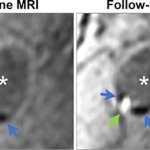
News • Imaging
Carotid Plaques Evolve Dangerously Over Time in Asymptomatic Patients
MRI study of 802 patients shows carotid plaques become more complex over six years, with calcified plaques twice as likely to develop dangerous internal bleeding.

MRI study of 802 patients shows carotid plaques become more complex over six years, with calcified plaques twice as likely to develop dangerous internal bleeding.
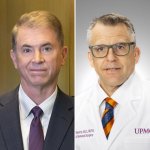
Giving separated blood plasma improves outcomes in patients with traumatic brain injury (TBI) or shock, whereas unseparated or “whole” blood may be best for patients with traumatic bleeding.

While thrombectomy to remove blood clots after a stroke is increasingly performed, new research suggests that it may not be needed in all cases.

A new blood test that detects a specific brain protein may help doctors determine the type of a stroke faster and allow them to start safe treatment for people before they get to the hospital.

Cerebral venous sinus thrombosis (CVT) is a type of stroke that typically affects women between 20 and 50. Researchers developed a way to predict which patients are at risk of epilepsy after a CVT.
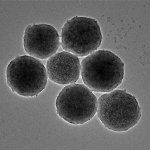
Brain aneurysms cause around 500,000 deaths globally each year and can lead to stroke and disability. Now, researchers created nanoscale robots to manage bleeds in the brain caused by aneurysms.

Handheld point-of-care diagnostics, magnetic endoscopy, AI-enhanced robotic surgery, smart patient information management, wireless minimally invasive surgery systems, and much more: At the Medical Taiwan Health & Care Expo in Taipei this summer, visitors had the opportunity to see innovative medical products and solutions across a wide range of specialties. We took a closer look at selected…
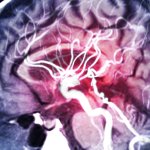
In lab models of stroke, a research team showed that laser therapy improved blood flow in the brain and decreased stroke injury by stimulating the production of nitric oxide.
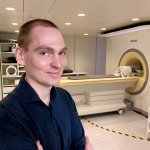
A new sensor prototype can detect errors in MRI scans in a way that is impossible for current electrical sensors – and hopefully pave the way for MRI scans that are better, cheaper and faster.

Neurobiologists in Sweden have discovered a way to partially restore communication between nerve cells in the brain after a stroke. This could lead to future treatments, the researchers say.
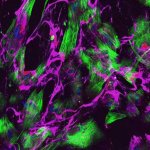
Using small blood vessels grown in the lab, researchers discover how vascular leaks leading to dementia and stroke emerge – and how this damage might be fixed.
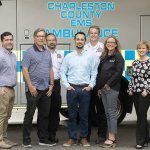
Because time is brain: To explore the potential for accelerated stroke diagnostics, US researchers equipped an ambulance with a portable MRI – with promising first results.

Neurologists at Amsterdam UMC have developed a special sensor cap that interprets EEG brain waves to early detect signs of an ischemic stroke while the patient is in the ambulance.

Genes are full of clues about a person's health and might also show the way for stroke recovery.

Researchers have developed a new tool and technique that uses “vortex ultrasound” – a sort of ultrasonic tornado – to break down blood clots in the brain.
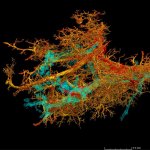
A new X-ray technology has been used to identify a link between the damage that severe Covid-19 can inflict on lungs and pulmonary fibrosis, a disease that causes severe scarring of lung tissue.

In the future, many types of open surgeries will be replaced with minimally invasive interventions, predicts Kevin Cleary, PhD, engineering lead at the Sheikh Zayed Institute for Pediatric Surgical Innovation at Children’s National Hospital, and Professor of Pediatrics and Radiology at George Washington University, both in Washington, D.C. Surgeons and interventional radiologists will be able…
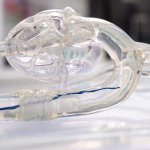
A spin-off from ETH Zürich has developed a magnetically steerable catheter for quick and safe stroke treatment that no longer requires surgeons to be on site.
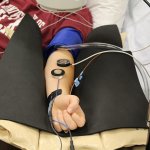
Similar to the way exercise helps muscles adapt to workouts, short, repeated bouts of reduced circulation with a blood pressure cuff may help prevent the worst outcomes of heart attacks and strokes.
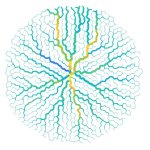
Networks adapt over time and in this way form a kind of memory. German researchers show that the structure of blood vascular network is dynamic and can adapt to external factors.
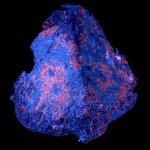
When every minute counts: A Swiss team is currently developing a diagnostic procedure that can be used to start a tailored therapy for acute stroke in a timely manner.
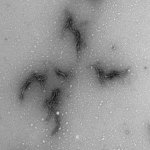
In patients with serious and long-term Covid-19, disturbed blood coagulation is often observed. Now, Swedish researchers found a connection between harmful amyloid production and Covid-19 symptoms.
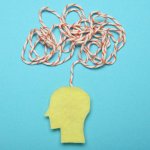
Cognitive impairment as a result of severe Covid-19 is similar to that sustained between 50 and 70 years of age and is the equivalent to losing 10 IQ points, scientists found.
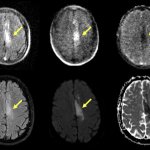
Portable MRI machines detected ischemic strokes, or strokes caused by clotting, in 90% of patients scanned.

Engineers at the Massachusetts Institute of Technology (MIT) have developed a telerobotic system to help surgeons quickly and remotely treat patients experiencing a stroke or aneurysm.
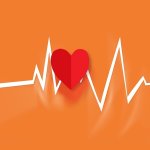
For people with atrial fibrillation, one of our most common cardiac disorders, dementia risk is elevated.

A literature review fleshes out key issues currently preventing the proliferation of robotic procedures, specifically their use in image-guided interventional procedures in the brain.

When a patient suffers a stroke, speed in treatment can mean the difference between successful recovery, permanent disability, or death. For Christopher Hess, success in stroke diagnosis is a question of workflow and efficient care delivery.

Doctors work on initiatives to cut down the steps that need to happen between the time a stroke patient is wheeled through the ambulance bay until treatment can begin.
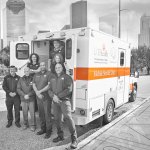
Speed in treatment of ischemic stroke can mean the difference between successful recovery versus permanent disability caused by brain tissue damage or death. Time is of the essence to perform thrombolysis with a tissue plasminogen activate (tPA), a protein that can dissolve blood clots causing the stroke or intra-arterial thrombolytic therapy (IAT) because of large-vessel occlusion.

A commonly available imaging technique can identify stroke patients most likely to benefit from a procedure to restore blood flow, a potential breakthrough in care that could save thousands of lives every year
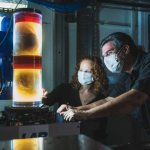
The damage caused by Covid-19 to the lungs’ smallest blood vessels has been intricately captured using high-energy X-rays emitted by a special type of particle accelerator. Scientists used a new imaging technology called Hierarchical Phase-Contrast Tomography (HiP-CT), to scan donated human organs, including lungs from a Covid-19 donor.
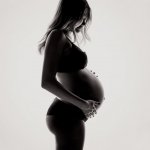
A study found that women who contract Covid-19 during pregnancy are at significantly higher risk of developing pre-eclampsia. In their study, researchers said their systematic review shows that women with SARS-CoV-2 infection during pregnancy had 62% higher odds of developing preeclampsia than those without the infection during pregnancy.

A new study of patients with cerebral venous thrombosis (CVT) following Covid-19 vaccination provides a clearer guide for clinicians trying to diagnose and treat patients. The research, led by University College London (UCL) and UCL Health and published in The Lancet, is the most detailed account of the characteristics of CVT, when it is caused by the novel condition vaccine-induced immune…

The tell-tale signs of a person’s susceptibility to a stroke may appear up to 10 years before the event, suggests research published online in the Journal of Neurology Neurosurgery & Psychiatry. Stroke patients experienced much steeper declines in cognitive abilities and routine daily functioning, starting around a decade before their first stroke, than people who didn’t have a stroke,…

A study involving virtual rather than real patients was as effective in evaluating a medical device used to treat brain aneurysms, according to new research. The findings are proof of concept for what are called in-silico trials, where instead of recruiting people to a real-life clinical trial, researchers build digital simulations of patient groups, loosely akin to the way virtual…

After a stroke, doctors can try to remove clots in blood vessels to keep blood flowing freely to the brain. But even though most of these procedures are successful, less than half of people have a successful recovery from the stroke. A new study published in the medical journal Neurology sheds light on why that may be. The study found that trying more than once during a procedure to retrieve a…

A large study from Denmark and Norway published by The BMJ sheds more light on the risk of rare blood clots in adults receiving their first dose of the Oxford-AstraZeneca Covid-19 vaccine. The findings show slightly increased rates of vein blood clots including clots in the veins of the brain, compared with expected rates in the general population. However, the researchers stress that the risk of…

In just the last two years, artificial intelligence has become embedded in scores of medical devices that offer advice to ER doctors, cardiologists, oncologists, and countless other health care providers. But how much do either regulators or doctors really know about the accuracy of these tools? A new study led by researchers at Stanford, some of whom are themselves developing devices, suggests…

Researchers at the University of Oxford report that the risk of the rare blood clotting known as cerebral venous thrombosis (CVT) following Covid-19 infection is around 100 times greater than normal, several times higher than it is post-vaccination or following influenza. The study authors, led by Professor Paul Harrison and Dr Maxime Taquet from Oxford University’s Department of Psychiatry and…
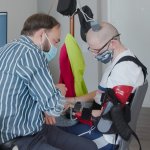
Someone has a stroke every 40 seconds in the US, resulting in death every 4 minutes. Stroke is the leading cause of disability from a medical condition. When it happens, blood clots or bleeds kill a part of the brain – it goes dark – and can no longer control part of the body. People stop being able to walk, see, talk, or control their hand or arm the way they once did. Although treatments…
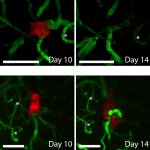
Brain metastases can only develop if cancer cells first exit the fine blood vessels and enter into the brain tissue. To facilitate this step, cancer cells influence blood clotting, as scientists from the German Cancer Research Center and Heidelberg University Hospital have now been able to show in mice. The cancer cells actively promote the formation of clots, which helps them to arrest in the…
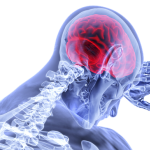
Asian ethnicity is strongly linked to COVID-related stroke, reveals an analysis of stroke centre activity in England and Scotland during the first wave of the coronavirus pandemic, and accepted for publication in the Journal of Neurology Neurosurgery & Psychiatry.
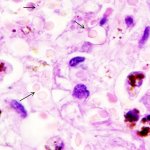
Specialists from the Department of Fundamental Medicine of Far Eastern Federal University (FEFU) with Russian and Japanese colleagues have probed into mechanisms of COVID-19 inside-the-body distribution linked to erythrocytes damaging.

The SARS CoV-2 virus which causes COVID-19 may have been named prematurely. As more has become known about the infection, the severe disease does not appear to be a respiratory syndrome at all. Patients who only have a respiratory illness tend not to have a severe condition, while patients who develop a severe condition tend to have non-respiratory conditions, primarily thrombotic or hyper-immune…
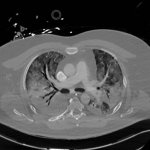
There are major complications from COVID-19 – ARDS, pulmonary embolism and neurological – that imaging can help detect, manage and/or follow up in the long term, radiologists from France and the UK explained during a recent ESR Connect session. ARDS is the most dreaded complication and the number one morbidity in COVID-19 patients. The incidence was up to 30% of patients in initial reports.…
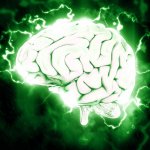
As Covid-19 spreads throughout the country, much attention has been paid to the devastating effects of the virus on the lungs. But doctors are learning how the virus may affect other organs, including the brain. Some patients with Covid-19 have had neurological symptoms, which may include an increased risk of stroke.
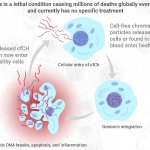
Sepsis—the body's own immune response gone against it—is a major health problem worldwide. It is basically a "hyper" immune response by the body to infection or injury, and is characterized by hyperinflammation, immune system paralysis, cell death, liver and kidney failure, blood clots, and even hemorrhage. An estimated 30 million people suffer from sepsis every year, of which 20%…
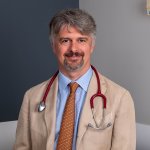
More than 1,125,000 men around the world have the inherited bleeding disorder of hemophilia, and 418,000 of those have a severe version of the mostly undiagnosed disease, says a new study led by McMaster researchers. This is three times what was previously known. Only 400,000 people globally were estimated to have the disorder which is caused by a defect in the F8 or F9 gene which encodes…

It appears that an influenza vaccine does not just work when it comes to influenza. A new study shows that elderly people who have been admitted to an intensive care units have less risk of dying and of suffering a blood clot or bleeding in the brain if they have been vaccinated. And this is despite the fact that they are typically older, have more chronic diseases and take more medicine then…

Researchers at The Ohio State University College of Medicine and The Ohio State University Wexner Medical Center have developed a novel stroke therapy that, when tested in mice and dogs, has proven superior to the standard of care therapy now offered to patients suffering a stroke. Findings of the study are published online in Molecular Therapy. “We have shown that our drug, which is completely…
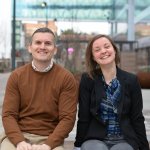
Researchers at Karolinska Institutet have found that type IgG antibodies play an unexpected role in atherosclerosis. A study on mice shows that the antibodies stabilise the plaque that accumulates on the artery walls, which reduces the risk of it rupturing and causing a blood clot. It is hoped that the results, which are published in the journal Circulation, will eventually lead to improved…

The pill could be blurring your social judgement ‒ but perhaps not enough so you'd notice. By challenging women to identify complex emotional expressions like pride or contempt, rather than basic ones like happiness or fear, scientists have revealed subtle changes in emotion recognition associated with oral contraceptive pill (OCP) use. Published in Frontiers in Neuroscience, their study found…
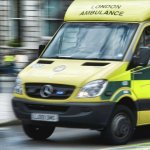
A new analysis from University College London, King's and the University of Manchester finds an extra 69 lives are being saved every year as a result of further centralisation of services in Greater Manchester. In London, where earlier research had shown that centralising acute stroke services saved an extra 96 extra lives per year, these improvements have been sustained over time.
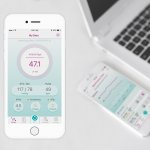
Here at Medica, the Taiwanese start-up Maisense is demonstrating Freescan, its artificial intelligence (AI) based solution to screen for stroke through the early detection of atrial fibrillation (AFib). Speaking of the system’s aims, Maisense summed up this huge health problem. ‘Every four minutes, someone dies of stroke. Thirteen percent of these are classified as haemorrhagic stroke. When…

Neurologist who coined the phrase "Time is Brain" says message is not so simple anymore. Rather there should be no hard-and-fast rule governing when therapy can be given because strokes progress differently in different patients.

In an international study, scientists of the University Medical Center Hamburg-Eppendorf (UKE) have discovered a new therapeutic option for a large group of stroke patients. The main results of the European WAKE-UP trial were presented at the European Stroke Organisation Conference (ESOC) in Gothenburg, Sweden. At the same time, the trial results were published in the New England Journal of…

Treating stroke has long been governed by the clock. If it has been less than three hours since the onset of symptoms, the clot-busting drug t-PA will likely work. If it has been four and a half hours, some selected patients might benefit. However, if it has been more than six hours, treatment options have been few. Now that conventional wisdom has been turned on its head. The final results of…

Blood-thinning drugs not only reduce the risk of stroke in patients with atrial fibrillation (AF) but are also associated with a significant reduction in the risk of dementia, according to new research published today in the European Heart Journal.
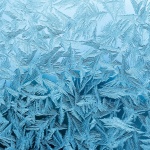
The stimulant methamphetamine, also popularly known as ‘speed,’ ‘ice’ and ‘meth,’ is linked to a heightened risk of stroke among young people, reveals a review of the available evidence, published online in the Journal of Neurology Neurosurgery & Psychiatry.

Faster and better recovery after stroke may be the result of a newly discovered treatment strategy that created new nerve synapses in the brain—a key factor for learning. A study at Sahlgrenska Academy showed improved ability to use the affected paw in mice that received the treatment.

Using specialized CT scans of a healthy heart and one with heart disease, a team of Johns Hopkins cardiologists and biomedical engineers say they've created computer models of the "shape" of blood flow through the heart's upper left chamber that someday may help predict stroke risk.

A study published in the prestigious New England Journal of Medicine offers the most in-depth assessment yet of the safety and effectiveness of a high-tech alternative to brain surgery to treat the uncontrollable shaking caused by the most common movement disorder. And the news is very good.

UK researchers have identified a new approach, which could make it easier to identify fatty plaques that could cause heart attacks or a stroke.

In a study of stroke patients, investigators confirmed through MRI brain scans that there was an association between the extent of disruption to the brain's protective blood-brain barrier and the severity of bleeding following invasive stroke therapy. The results of the National Institutes of Health-funded study were published in Neurology.

They did it for heart attacks. Can cardiologists now lead an effort to speed up the emergency medical response for stroke? Over the past five years, the Stent for Life initiative organised by interventional cardiologists has pushed majors medical centres to assure 24/7 coverage and reduce the time to treatment for patients showing up with severe chest pain.

A research paper published in the New England Journal of Medicine (NEJM) today confirms earlier findings that a procedure called endovascular therapy (ET) for ischemic stroke is the best treatment option for many patients by reducing the incidents of disability. This is the fourth research paper published this year that confirms the efficacy of the treatment.

Stroke resulting from rupture or interruption of blood flow in brain vessels can lead to devastating consequences for patients, their families and society. Steady progress has been achieved in the last 20 years in stroke treatment through better prevention, establishment of stroke care units and the use of clot-busting drugs (intravenous thrombolysis).

Neurologists keenly debate the value of mechanical reopening of blocked blood vessels in the brain, as demonstrated during the 21st World Congress for Neurology (WCN) in Vienna this September. Theoretically, endovascular thrombolysis can only be considered for 20-30% of all incidents of stroke.

Neurointensivists need to act quickly and carefully – as well as consider later complications or the psychological impact on stroke victims. This potentially debilitating disease was a central discussion among 1,400 participants from 10 countries during the three-day 29th Annual Conference of Neurointensive Medicine (ANIM), an event hosted in January by The German Society for Neuro-Intensive…

Johns Hopkins neurologists report success with a new means of getting rid of potentially lethal blood clots in the brain safely without cutting through easily damaged brain tissue or removing large pieces of skull. The minimally invasive treatment, they report, increased the number of patients with intracerebral hemorrhage (ICH) who could function independently by 10 to 15 percent six months…

The theme of this year's World Stroke Day on 29 October is "One in Six", referring to the facts that one in six people will have a stroke at some point in their lifetime, and that a stroke will be the cause of someone's death every six seconds. These, says the World Stroke Organization (WSO), are everyday people leading everyday lives, but around 85% of them will have risk factors…

Neurocardiology – especially atrial fibrillation (AF) – was the key topic during a press conference held during the 55th Annual Congress of the Germany Society for Clinical Neurophysiology and Functional Imaging (DGKN) this March. For good reason: Worldwide, there are around six million AF sufferers -- and it is one of the most common causes of stroke because this cardiac irregularity can…

The Siemens sector Healthcare has developed the new consulting model “Act on Stroke”, tailored specifically to clinical workflows in the treatment of stroke. Following models for industry processes, an expert team from Siemens evaluates the maturity level of clinical processes in a hospital.
With the “World Stroke Day” the World Stroke Organization (WSO) aims to communicate a unified message to the world: stroke is a preventable and treatable catastrophe, and together we can fight this growing epidemic. This year’s theme is “Stroke‐What can I do?” The answer is ‐ a lot. The WSO prompts individuals, groups and governments to take action against stroke either at a…

It’s hardly surprising that stroke was a focus at the 20th meeting of the European Neurological Society (ENS) -- every year at least a million people suffer one in the EU. In an interview with Bettina Döbereiner, Professor Karl Max Einhäupl, Director of the Department of Neurology at the Charité - University of Medicine Berlin, of which he is Chairman of the Board and co-chair of the ENS…

Trials for a new type of treatment for stroke that could help millions of people at risk of death or disability should commence in 2011. A research team in France has successfully completed laboratory tests of antibodies that protect the brain and reduce the side-effects of current therapy.
A telemedicine project is being used in rural areas of eastern England to enable stroke patients to receive clot-busting drugs within a critical three-hour time window. Adapting video-conferencing facilities, a telestroke service has enabled patients to receive a diagnosis from a stroke specialist, who can authorise thrombolytic drugs to be administered to those deemed eligible.

A key development at the Norfolk and Norwich University Hospital (NNUH), east of England, has seen a change in the role of radiology assistants: They now help to prepare patients for radiology scans and look after them -- work previously undertaken by radiographers. The change now allows radiographers more time to concentrate on scanning patients, resulting in faster scanning with quicker…

Like a bolt from the blue ischemic stroke strikes a patient unpredictably. The consequences are devastating: stroke is the number one cause of serious disabilities in adulthood - and, in Europe alone, someone suffers a stroke every 20 seconds. Thrombolysis ensures that blood clots in the brain dissolve. However, the majority of patients do not profit from this therapy.
A young singer leans against the mixing desk in a recording studio in a laid-back manner. She listens to songs just recorded for her new album, moving her lips to the sound. Suddenly she stops, reaches for her head and seconds later collapses, unconscious. On hospital admittance physicians discover that a previously undetected aneurysm in her brain has ruptured.

Patients with atrial fibrillation, so at risk of stroke, are usually treated with medication to prevent coagulation. The Hanover Medical School (MHH) has devised an alternative treatment.

Andrea Martini and Joerg Larsen, of the Institute for Roentgendiagnostics, Braunschweig Teaching Hospitals, Germany, discuss nanotechnology, hybrid imaging and the quest for a personalised medicine.

A new research collaboration to study the potential of microbubbles and ultrasound to treat ischemic strokes has been established between ImaRx Therapeutics, a biopharmaceutal company in Tucson, Arizona, and the Philips' Medical Systems division in Andover, Massachusetts.

A new biodegradable solution has stopped bleeding in animals' wounds within seconds, according to a report in the journal Nanomedicine.

Dr Hanns-Joachim Weinmann, Diagnostics and Radiopharmaceuticals, Magnetic Resonance Imaging & X-Ray Research, Schering AG, examines what is feasible and what still lies only at a tantalising distance.

As the German Society of Neuroradiology 40th annual meeting approached (Venue: Dresden. 31 August - 3 September), Professors Martin Schumacher (Freiburg), President of the German Society of Neuroradiology (GSN) and Rüdiger von Kummer (Dresden), the meeting's President, examine the history and potential in this medical field